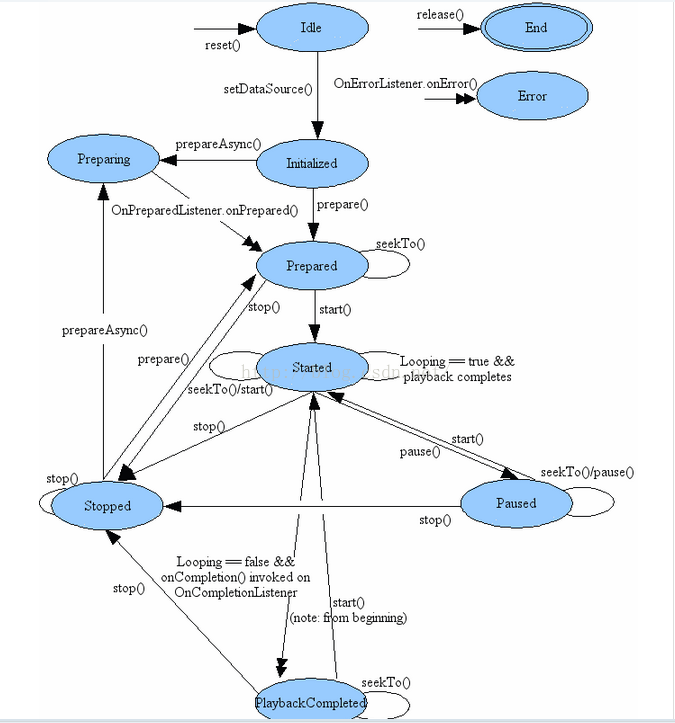java中多種方式讀文件
一、多種方式讀文件內容。
1、按字節讀取文件內容
2、按字符讀取文件內容
3、按行讀取文件內容
4、隨機讀取文件內容
*/
import java.io.BufferedReader;
import java.io.File;
import java.io.FileInputStream;
import java.io.FileReader;
import java.io.IOException;
import java.io.InputStream;
import java.io.InputStreamReader;
import java.io.RandomAccessFile;
import java.io.Reader;
public class ReadFromFile {
/**
* 以字節為單位讀取文件,常用於讀二進制文件,如圖片、聲音、影像等文件。
* @param fileName 文件的名
*/
public static void readFileByBytes(String fileName){
File file = new File(fileName);
InputStream in = null;
try {
System.out.println("以字節為單位讀取文件內容,一次讀一個字節:");
// 一次讀一個字節
in = new FileInputStream(file);
int tempbyte;
while((tempbyte=in.read()) != -1){
System.out.write(tempbyte);
}
in.close();
} catch (IOException e) {
e.printStackTrace();
return;
}
try {
System.out.println("以字節為單位讀取文件內容,一次讀多個字節:");
//一次讀多個字節
byte[] tempbytes = new byte[100];
int byteread = 0;
in = new FileInputStream(fileName);
ReadFromFile.showAvailableBytes(in);
//讀入多個字節到字節數組中,byteread為一次讀入的字節數
while ((byteread = in.read(tempbytes)) != -1){
System.out.write(tempbytes, 0, byteread);
}
} catch (Exception e1) {
e1.printStackTrace();
} finally {
if (in != null){
try {
in.close();
} catch (IOException e1) {
}
}
}
}
/**
* 以字符為單位讀取文件,常用於讀文本,數字等類型的文件
* @param fileName 文件名
*/
public static void readFileByChars(String fileName){
File file = new File(fileName);
Reader reader = null;
try {
System.out.println("以字符為單位讀取文件內容,一次讀一個字節:");
// 一次讀一個字符
reader = new InputStreamReader(new FileInputStream(file));
int tempchar;
while ((tempchar = reader.read()) != -1){
//對於windows下,rn這兩個字符在一起時,表示一個換行。
//但如果這兩個字符分開顯示時,會換兩次行。
//因此,屏蔽掉r,或者屏蔽n。否則,將會多出很多空行。
if (((char)tempchar) != 'r'){
System.out.print((char)tempchar);
}
}
reader.close();
} catch (Exception e) {
e.printStackTrace();
}
try {
System.out.println("以字符為單位讀取文件內容,一次讀多個字節:");
//一次讀多個字符
char[] tempchars = new char[30];
int charread = 0;
reader = new InputStreamReader(new FileInputStream(fileName));
//讀入多個字符到字符數組中,charread為一次讀取字符數
while ((charread = reader.read(tempchars))!=-1){
//同樣屏蔽掉r不顯示
if ((charread == tempchars.length)&&(tempchars[tempchars.length-1] != 'r')){
System.out.print(tempchars);
}else{
for (int i=0; i<charread; i++){
if(tempchars[i] == 'r'){
continue;
}else{
System.out.print(tempchars[i]);
}
}
}
}
} catch (Exception e1) {
e1.printStackTrace();
}finally {
if (reader != null){
try {
reader.close();
} catch (IOException e1) {
}
}
}
}
/**
* 以行為單位讀取文件,常用於讀面向行的格式化文件
* @param fileName 文件名
*/
public static void readFileByLines(String fileName){
File file = new File(fileName);
BufferedReader reader = null;
try {
System.out.println("以行為單位讀取文件內容,一次讀一整行:");
reader = new BufferedReader(new FileReader(file));
String tempString = null;
int line = 1;
//一次讀入一行,直到讀入null為文件結束
while ((tempString = reader.readLine()) != null){
//顯示行號
System.out.println("line " + line + ": " + tempString);
line++;
}
reader.close();
} catch (IOException e) {
e.printStackTrace();
} finally {
if (reader != null){
try {
reader.close();
} catch (IOException e1) {
}
}
}
}
/**
* 隨機讀取文件內容
* @param fileName 文件名
*/
public static void readFileByRandomAccess(String fileName){
RandomAccessFile randomFile = null;
try {
System.out.println("隨機讀取一段文件內容:");
// 打開一個隨機訪問文件流,按只讀方式
randomFile = new RandomAccessFile(fileName, "r");
// 文件長度,字節數
long fileLength = randomFile.length();
// 讀文件的起始位置
int beginIndex = (fileLength > 4) ? 4 : 0;
//將讀文件的開始位置移到beginIndex位置。
randomFile.seek(beginIndex);
byte[] bytes = new byte[10];
int byteread = 0;
//一次讀10個字節,如果文件內容不足10個字節,則讀剩下的字節。
//將一次讀取的字節數賦給byteread
while ((byteread = randomFile.read(bytes)) != -1){
System.out.write(bytes, 0, byteread);
}
} catch (IOException e){
e.printStackTrace();
} finally {
if (randomFile != null){
try {
randomFile.close();
} catch (IOException e1) {
}
}
}
}
/**
* 顯示輸入流中還剩的字節數
* @param in
*/
private static void showAvailableBytes(InputStream in){
try {
System.out.println("當前字節輸入流中的字節數為:" + in.available());
} catch (IOException e) {
e.printStackTrace();
}
}
public static void main(String[] args) {
String fileName = "C:/temp/newTemp.txt";
ReadFromFile.readFileByBytes(fileName);
ReadFromFile.readFileByChars(fileName);
ReadFromFile.readFileByLines(fileName);
ReadFromFile.readFileByRandomAccess(fileName);
}
}
二、將內容追加到文件尾部
import java.io.FileWriter;
import java.io.IOException;
import java.io.RandomAccessFile;
/**
* 將內容追加到文件尾部
*/
public class AppendToFile {
/**
* A方法追加文件:使用RandomAccessFile
* @param fileName 文件名
* @param content 追加的內容
*/
public static void appendMethodA(String fileName,
String content){
try {
// 打開一個隨機訪問文件流,按讀寫方式
RandomAccessFile randomFile = new RandomAccessFile(fileName, "rw");
// 文件長度,字節數
long fileLength = randomFile.length();
//將寫文件指針移到文件尾。
randomFile.seek(fileLength);
randomFile.writeBytes(content);
randomFile.close();
} catch (IOException e){
e.printStackTrace();
}
}
/**
* B方法追加文件:使用FileWriter
* @param fileName
* @param content
*/
public static void appendMethodB(String fileName, String content){
try {
//打開一個寫文件器,構造函數中的第二個參數true表示以追加形式寫文件
FileWriter writer = new FileWriter(fileName, true);
writer.write(content);
writer.close();
} catch (IOException e) {
e.printStackTrace();
}
}
public static void main(String[] args) {
String fileName = "C:/temp/newTemp.txt";
String content = "new append!";
//按方法A追加文件
AppendToFile.appendMethodA(fileName, content);
AppendToFile.appendMethodA(fileName, "append end. n");
//顯示文件內容
ReadFromFile.readFileByLines(fileName);
//按方法B追加文件
AppendToFile.appendMethodB(fileName, content);
AppendToFile.appendMethodB(fileName, "append end. n");
//顯示文件內容
ReadFromFile.readFileByLines(fileName);
}
}
 小米max什麼時候上市?小米max配置怎麼樣?
小米max什麼時候上市?小米max配置怎麼樣?
 收藏的Android非常好用的組件或者框架。
收藏的Android非常好用的組件或者框架。
 小米電視2s和小米電視2區別
小米電視2s和小米電視2區別
 Android開發之MdiaPlayer詳解
Android開發之MdiaPlayer詳解